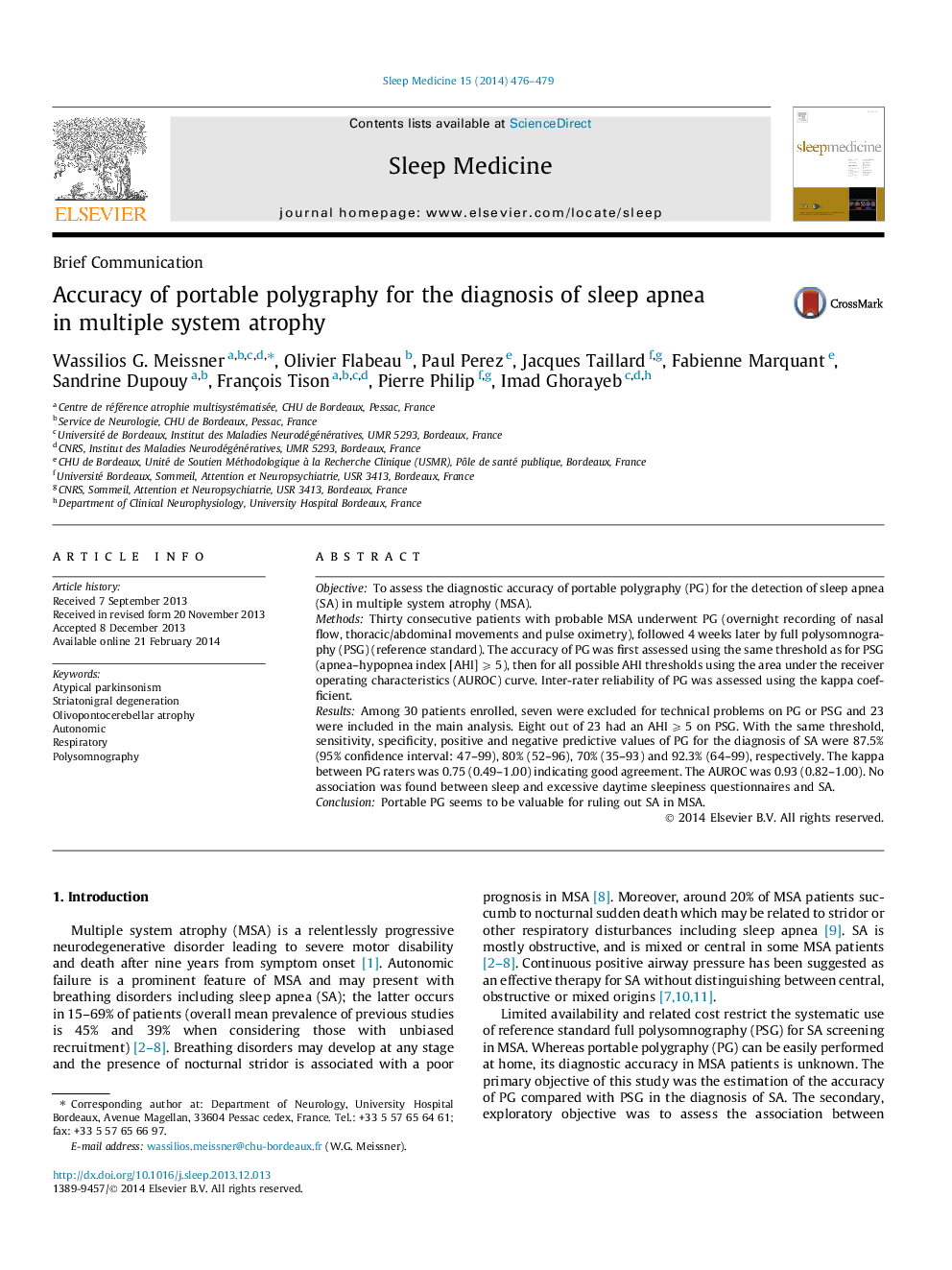| Article ID | Journal | Published Year | Pages | File Type |
|---|---|---|---|---|
| 3176153 | Sleep Medicine | 2014 | 4 Pages |
ObjectiveTo assess the diagnostic accuracy of portable polygraphy (PG) for the detection of sleep apnea (SA) in multiple system atrophy (MSA).MethodsThirty consecutive patients with probable MSA underwent PG (overnight recording of nasal flow, thoracic/abdominal movements and pulse oximetry), followed 4 weeks later by full polysomnography (PSG) (reference standard). The accuracy of PG was first assessed using the same threshold as for PSG (apnea–hypopnea index [AHI] ⩾ 5), then for all possible AHI thresholds using the area under the receiver operating characteristics (AUROC) curve. Inter-rater reliability of PG was assessed using the kappa coefficient.ResultsAmong 30 patients enrolled, seven were excluded for technical problems on PG or PSG and 23 were included in the main analysis. Eight out of 23 had an AHI ⩾ 5 on PSG. With the same threshold, sensitivity, specificity, positive and negative predictive values of PG for the diagnosis of SA were 87.5% (95% confidence interval: 47–99), 80% (52–96), 70% (35–93) and 92.3% (64–99), respectively. The kappa between PG raters was 0.75 (0.49–1.00) indicating good agreement. The AUROC was 0.93 (0.82–1.00). No association was found between sleep and excessive daytime sleepiness questionnaires and SA.ConclusionPortable PG seems to be valuable for ruling out SA in MSA.
